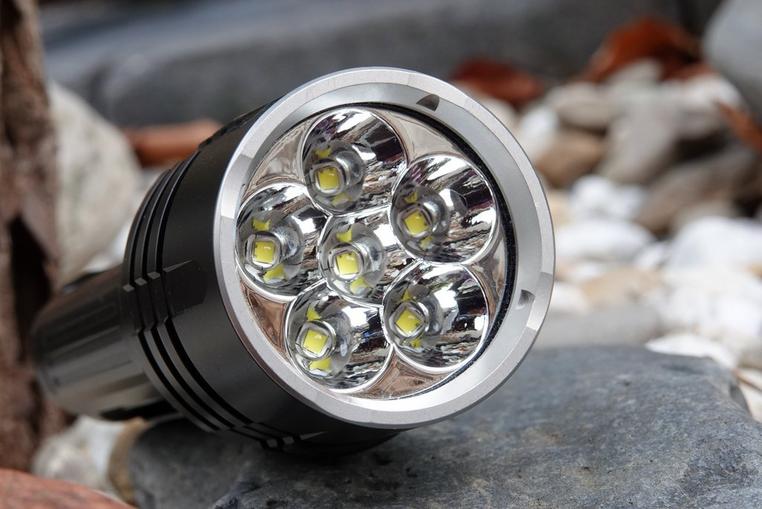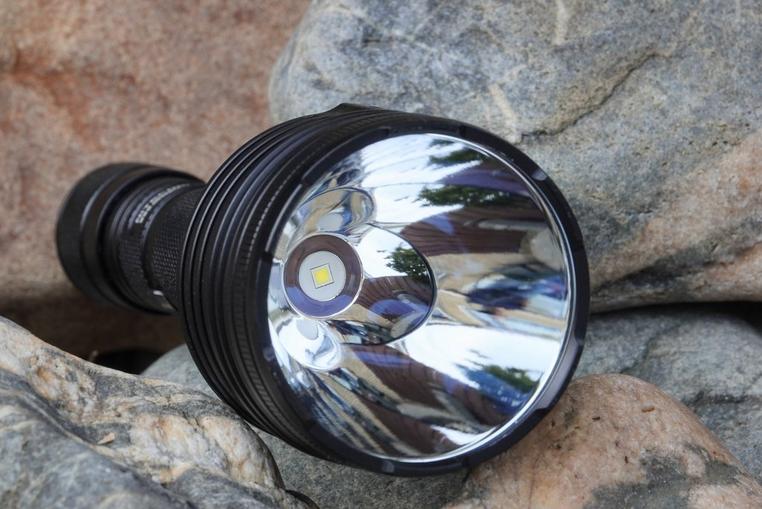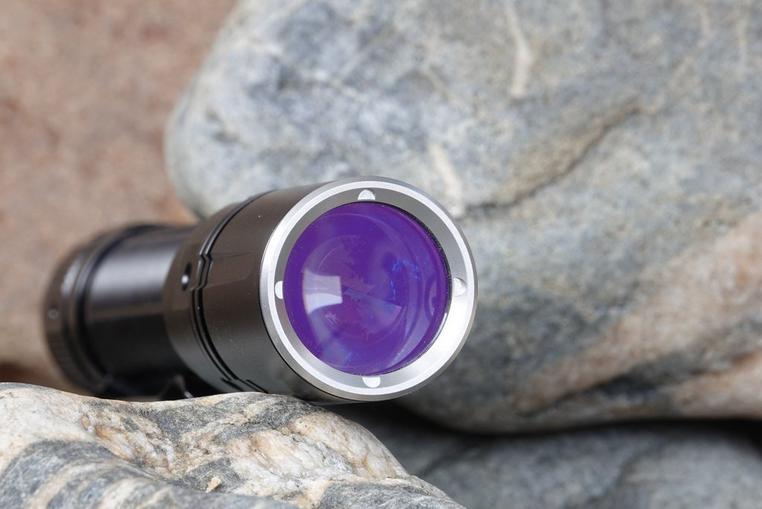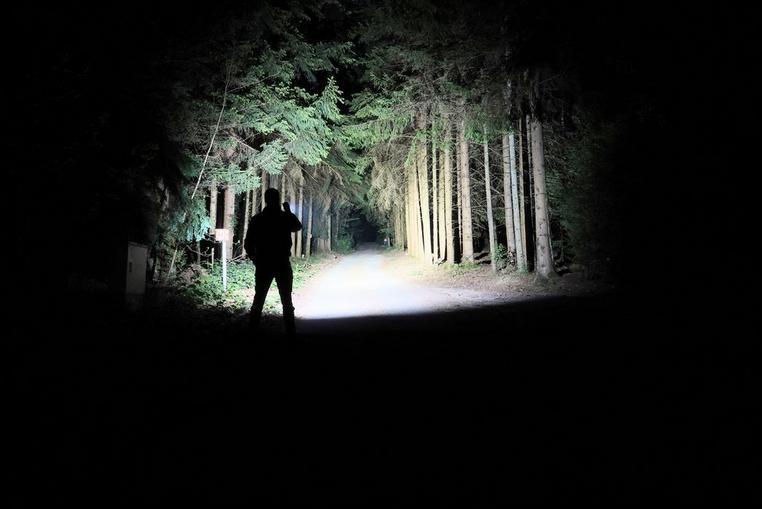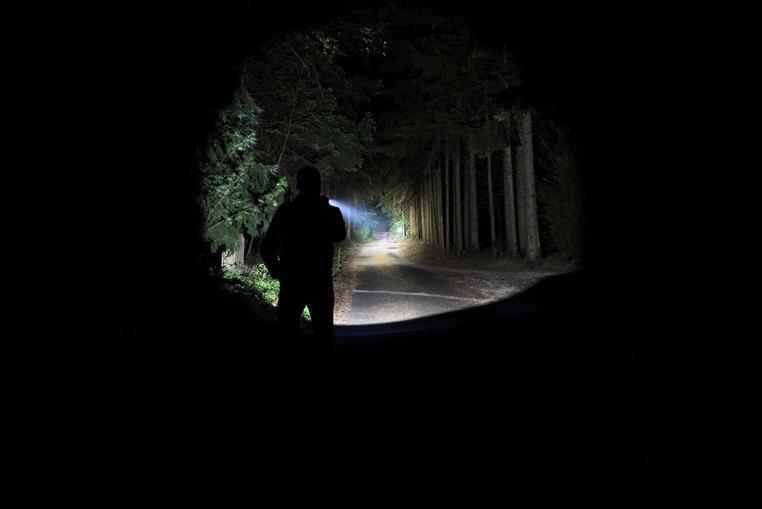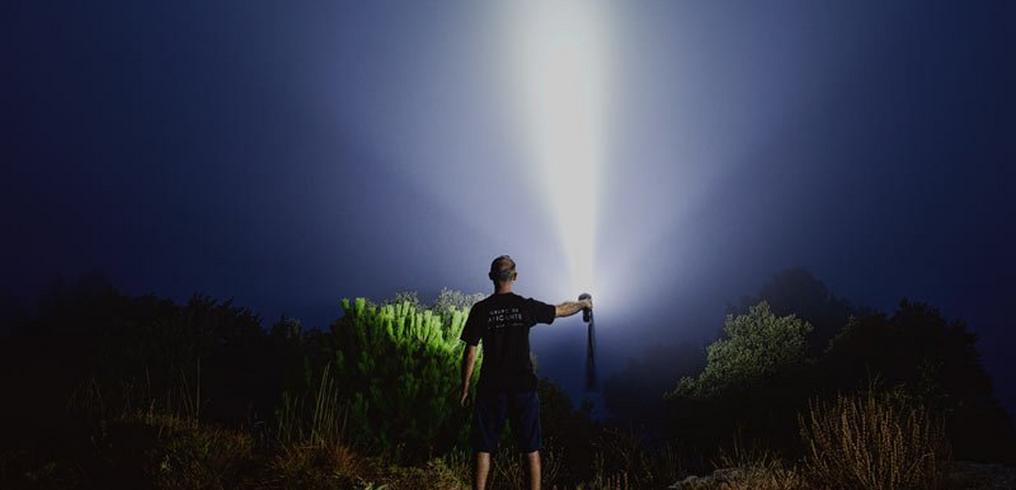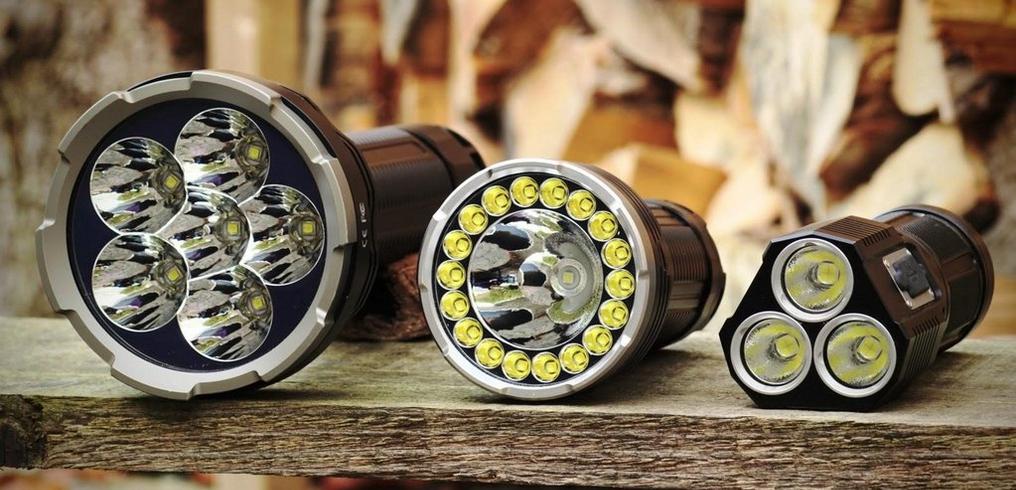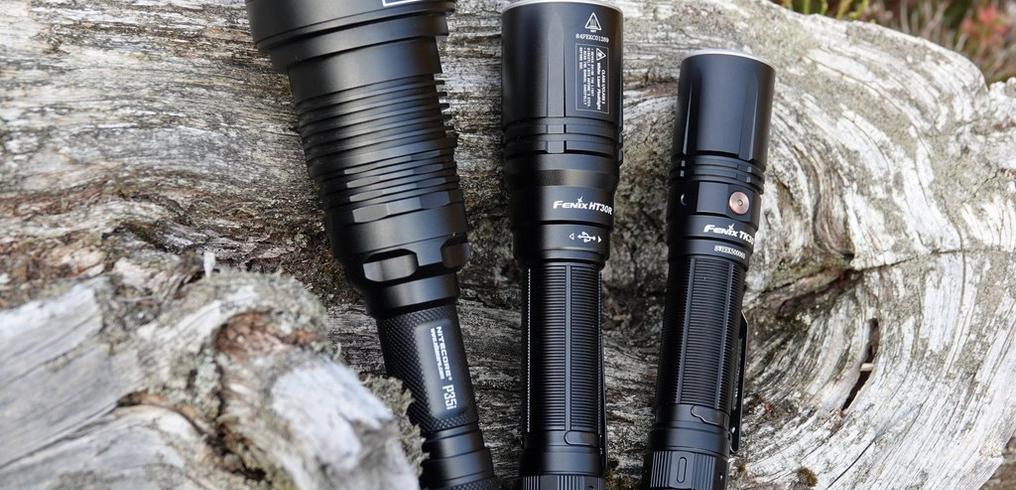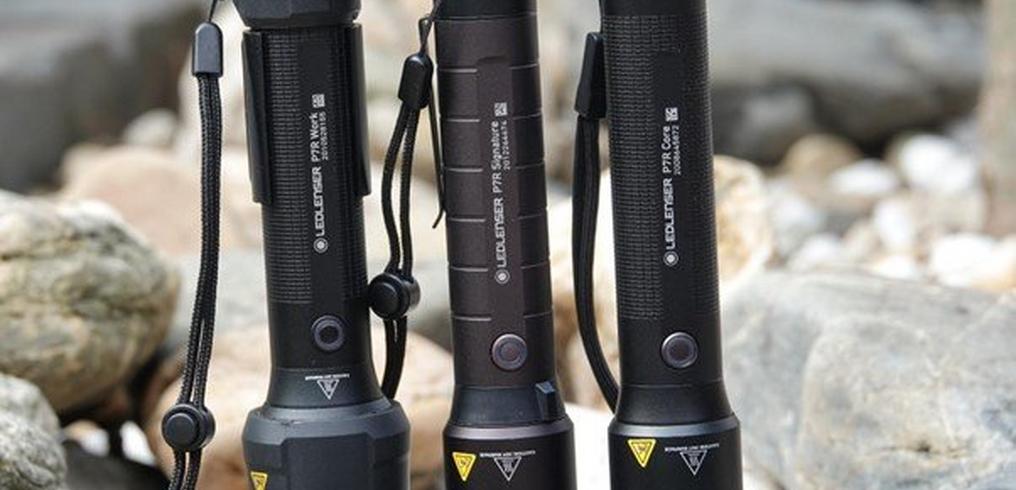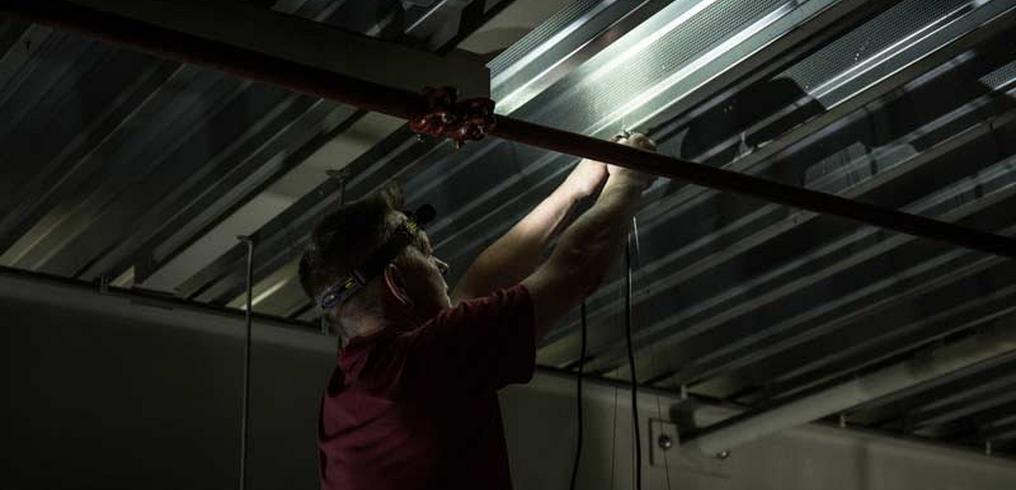The large light beam comparison
The beam of a flashlight or head torch determines how you will use it on a daily basis. This interesting article will dive deeper into this topic. This time I want to talk more about the pros and cons per beam and also show you some examples of beams starring a couple popular flashlights.
I will stay away from the physics terms (convergent, divergent and parallel) and mostly focus on the more common terms which I often use in my reviews. Based on this I found four different beams:
- The wide beam "flood":
Characteristics: Large LED light/ light source in a shallow reflector and a relatively small head; for large lights often multiple LED lights (up to 20!). Sometimes a special lens (TIR, with internal reflection) is used to spread out the light even more. These types of lights are often very compact when compared to their performance.
Pros:
- Especially up close you won't miss out on anything thanks to the broad beam.
- Thanks to the nice and even beam, without hotspot, you can also easily use these types of lights for photography or during DIY tasks.
Cons:
- A large LED light with a lot of output in a small head quickly heats up.
- Because you light up quite a lot at such a short distance, it could become a little disorienting especially when using the higher light modes. Think of the example where you look outside from a lighted room and see less than when you turn the light off.
- The combined beam "flood + throw":
Characteristics:
Medium-size light source in a deep reflector with a smooth structure. Larger lights are often enhanced with multiple LED lights, but the maximum amount is clearly less than for a "flooder". Because you need more room for a deeper reflector, the head is, in comparison, bigger than for a flooder.
Pros:
-
The "all-round" beam can be used during many different situations.
-
Thanks to the deeper reflector and often bigger head you can use the higher light modes for a longer period of time because the light won't heat up as fast as a flooder.
Cons:
-
The more focused beam is often more blinding than a flooder.
-
The larger head ensures that these lights are not as jeans or pocket-proof.
-
The concentrated beam "throw":
Characteristics:
Small, often flat light source ("dedomed") in a deep, smooth reflector with around it a large head. In almost all cases a single LED light is used. These lights are often enhanced with a longer, slim body making the light feel great in hand.
Pros:
- Because you experience some 'depth' in your light image you will never be surprised by unexpectedly appearing obstacles while moving. You are in the dark and cannot blind yourself.
- Throwers often last a long time in terms of battery; it is the result of the smaller and more energy-efficient LED lights that provide less output but do have a higher reach.
Cons:
- Works incredibly blinding without you noticing it, so be careful!
- The large head and the length of the body can get in the way during transport; these types of lights often don't fit inside your pocket.
- Concentrated beam "laser":
Characteristics:
Specific module with, behind it, a special lens; the head is surprisingly compact. Especially these types of lights need to be used carefully to prevent damage to your eyes.
Pros:
- Has a massive reach (up to a km or even further!)
- Because the beam is so narrow overall it won't disturb its surroundings.
Cons:
- The light output is relatively low
- You need (like with binoculars with a large magnification) a steady hand or tripod to light up objects located far away for a longer period of time.
In practical terms:
Time to get practical! I compared all lights mentioned before in a completely dark forest. The slightly elevated path with a row of trees alongside of it, is a nice location to show you the differences. Check it out!
- The wide beam "flood":
A lot of light up close and a wide beam So enough light up close, but what happens a little further down the path escapes you. You hardly see an "overlap" in the even beam.
- Combined beam "flood + throw":
This beam is less wide, but a lot deeper. This large light had a lot more output than the other lights in this test, but is also clearly bigger. You clearly see more intensity in the middle of the beam: pay close attention to the trees.
- Concentrated beam "throw":
With this beam you clearly see the effect of the deep reflector. The beam easily bridges a distance of hundreds of meters. The residual light (the "spill") is relatively weak, but definitely enough to also see objects at a shorter distance.
- Concentrated beam "laser":
This beam is unique and mainly focuses on the visible end of the forest path. Even though the output of this light is modest, all the light is concentrated at long distances. Because you don't have to deal with residual light you won't blind yourself, and you can completely focus on the object you are lighting up.
My favourite light beam?
It is the only question left.. I have to be frank and say I cannot immediately answer it. Below, however, some of my personal experiences!
A flooder impresses me most; it is always fascinating to see how such a small tool can light up such a massive surface. Especially for the larger lights it is almost unimaginable how much light they can produce.
I use an all-rounder the most. They literally won't leave you in the dark and they are often tactical lights that are controlled via a switch on the back of the light. I still prefer this user interface.
A thrower is a great light for search ops. I once helped out while looking for escaped cattle and quickly noticed that with these types of lights you are often more at an advantage when compared to car headlights. Also, in a dark forest a thrower will make you feel safer because literally nothing can creep up to you when you can look hundreds of meters ahead.
I use a laser less because it is not really a light for the average user. This light is meant for specialists such as gamekeepers, but is, for instance, also suited as a pointer thanks to its focused beam. As an enthusiast though, I do really appreciate this technique!
Koen van der Jagt
Ever since he could walk Koen has been interested in lights, wires and batteries. As a child he was always working with dyno torches, bike lights and electrical boxes. The krypton and halogen lights were replaced by LED lights. A couple of years ago he discovered the ‘professional’ stuff. His first brands were Led Lenser and Fenix. Photography is also one of his hobbies. In addition to nature and meteorology Koen loves to show others what a light can do and what its beam looks like at night. Koen’s reviews can often be found on forums such as candlepowerforums.com and taschenlampen-forum.de. Throughout the years Koen has collected lights in practically any category: from small and compact to enormous powerhouses.



